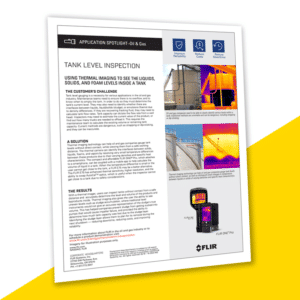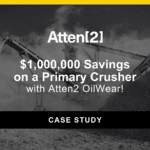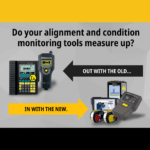
IRT Application Series: Tank Level Inspection
Using thermal imaging to see the liquids, solids and foam levels inside a tank.
The challenge
- Check on product/by-product levels
- Determine presence of interfaces between liquids, liquids/solids and emulsions.
- Calculate tank flow rates
- Calculate existing volume and remaining tank capacity
- Estimate current product value, or calculate offloading requirements for transport
The solution
The result
The Importance of Tank Level Gauging in the Oil and Gas Industry
Tank level gauging is a necessity for various applications in the oil and gas industry. Accurate monitoring of tank levels can help maintenance teams avoid tank overflows, calculate tank flow rates, and optimize storage capacity.
Benefits of Thermal Imaging for Tank Level Gauging
Thermal imaging is an advanced technology that allows oil and gas companies to gauge tank levels without direct contact. This non-intrusive method provides several advantages:
1. Safety and Efficiency: By eliminating the need for physical contact, thermal imaging reduces the risk of accidents and improves the efficiency of the gauging process.
2. Precision in Measurement: Thermal imaging can detect small changes in temperature, which is crucial for distinguishing between liquids or solids of varying densities. This precise measurement is essential for managing materials with specific heat characteristics.
3. Early Detection of Anomalies: Thermal imaging can identify temperature anomalies that may indicate potential issues, allowing for early intervention and maintenance before problems escalate.
In conclusion, integrating thermal imaging into tank level gauging processes offers significant benefits for oil and gas operations. It enhances safety, accuracy, and overall efficiency, making it an invaluable tool for the industry.





